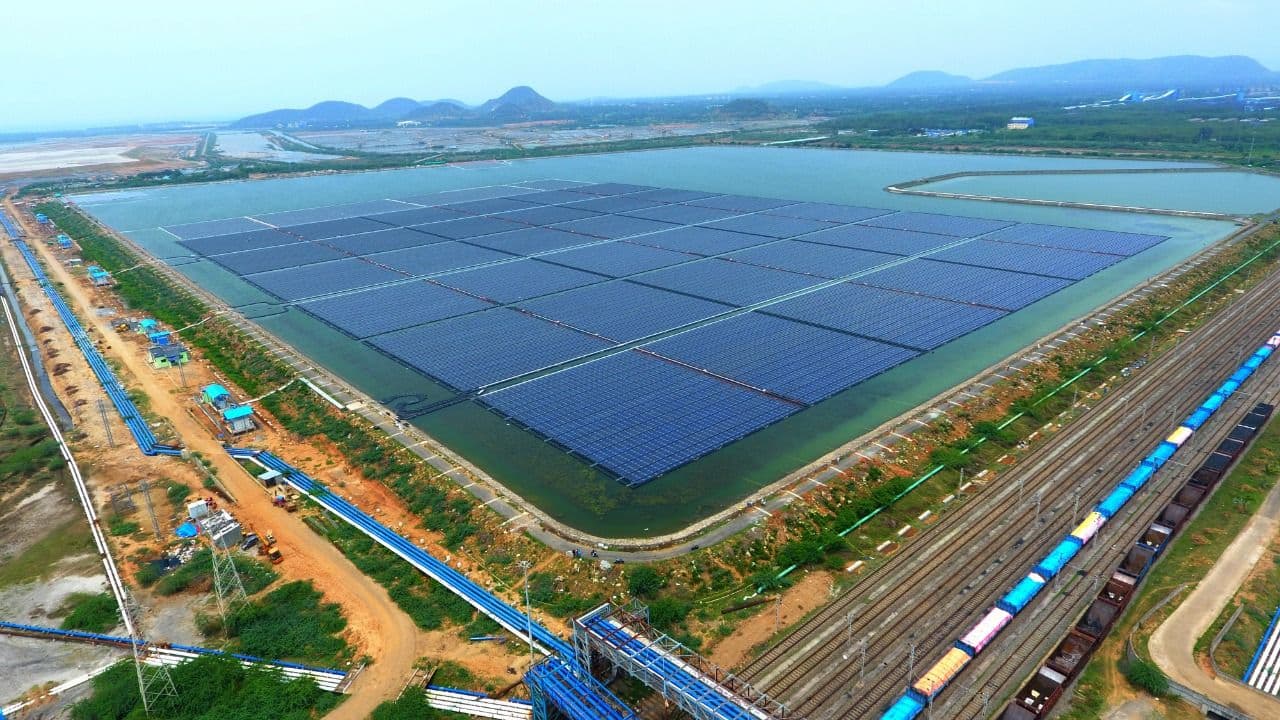 |
|
NTPC Ltd's Chairman and Managing Director, Gurdeep Singh, has announced ambitious plans for the company's renewable energy arm, NTPC Green Energy. The company aims to achieve a remarkable 60 GW of renewable energy capacity by 2030, two years ahead of schedule. This aggressive expansion strategy places a strong emphasis on solar power, with a planned allocation of 90 percent of its renewable energy portfolio to solar projects, compared to only 10 percent for wind energy. This decision is strategically driven by the consistent availability of solar energy throughout the year (approximately 340 days), in contrast to wind energy's intermittent nature and geographical limitations. The integration of battery energy storage systems in its solar projects is also a key component of NTPC Green's future plans, aligning with the Indian government's initiative to incorporate battery storage in solar tenders. This strategic move ensures a more reliable and consistent power supply, reducing reliance on the fluctuating nature of solar power generation.
However, a significant aspect of NTPC Green's strategy is its deliberate avoidance of Firm and Dispatchable Renewable Energy (FDRE) projects and Round-the-Clock (RTC) renewable energy projects. Singh clarified that the company does not intend to take on the responsibilities and potential penalties associated with guaranteeing a consistent power supply. He argues that the role of power generators is to produce electricity, while the distribution companies (discoms) are responsible for aggregating power and supplying it to end consumers. FDRE projects typically involve supplying round-the-clock power through energy storage solutions, with penalties imposed for failure to meet dispatch stipulations. This strategy contrasts with the government's efforts to encourage FDRE to meet renewable purchase obligations (RPO) and energy storage obligations (ESO). NTPC Green's focus will instead be on establishing partnerships with Central Public Sector Undertakings (CPSUs) and state governments to secure off-take agreements for its renewable energy output.
To achieve its ambitious 60 GW target, NTPC Green has already secured several agreements with state governments (Rajasthan, Maharashtra, Andhra Pradesh, Gujarat, Chhattisgarh, Telangana, among others) for land allocation and power off-take. Similarly, the company is forging partnerships with various CPSUs, including Indian Oil, ONGC, and Damodar Valley Corporation (DVC), to facilitate the distribution of its generated power. The company projects substantial progress towards its target, aiming to reach 19 GW of renewable energy capacity by FY27, with 6,000 MW by the end of FY25 and 11,000 MW by March FY26. The total investment required to achieve the 60 GW target is estimated at around Rs 5 lakh crore (approximately $60 billion USD). As of September 2024, NTPC Green boasted an impressive operational portfolio including 3,220 MW of solar power projects and 100 MW of wind projects across six states. This substantial existing capacity underscores the company's existing strength and commitment to the renewable energy sector.
The scale of NTPC Green's ambitions is further highlighted by its recent Initial Public Offering (IPO). The Rs 10,000-crore IPO, the largest by a PSU firm in the renewable energy sector, opened for subscription on November 19 and closed on November 22. This IPO signifies a significant step towards capitalizing on India's clean energy goals and provides investors with an opportunity to participate in the nation's clean energy transition. NTPC Green's position as the largest renewable energy public sector enterprise in India (excluding hydro) further reinforces its leadership role and potential for future growth. The success of this IPO will undoubtedly provide substantial funding for the company's ambitious expansion plans, accelerating the development of its solar power infrastructure and contributing significantly to India's renewable energy targets. The strategic choices made by NTPC Green, while diverging from the government's push towards FDRE, reflect a calculated risk-mitigation approach focusing on leveraging its existing strengths and building a robust and reliable solar power generation capacity.
The overall strategy of NTPC Green presents a compelling case study in the renewable energy sector. Their focus on large-scale solar projects, coupled with strategic partnerships and a significant IPO, showcases a clear pathway to achieving ambitious growth targets. The deliberate avoidance of FDRE, while potentially controversial, highlights a different risk management philosophy within the industry. This approach avoids the penalties and complexities of guaranteed power supply, allowing for greater flexibility and a focused approach to solar power generation. However, the long-term implications of this approach on India's broader renewable energy goals and the balancing act between cost-effectiveness, reliability, and risk mitigation remain to be seen. The future success of NTPC Green's strategy will largely depend on factors like the continued growth of the Indian solar energy market, the availability of land and resources, the successful execution of their partnerships, and the overall economic environment.
Source: Bullish on solar, not keen on FDRE: NTPC CMD Gurdeep Singh
